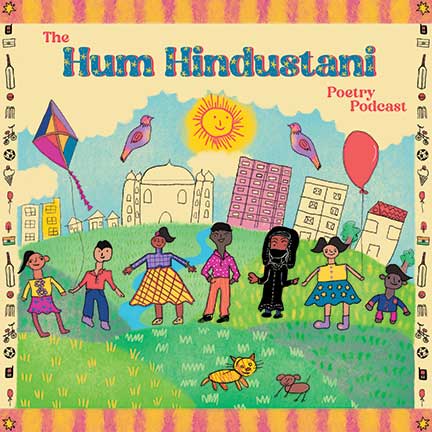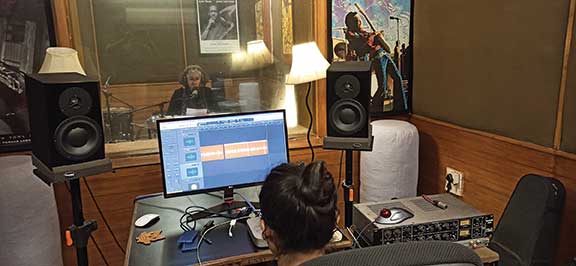Simran Luthra
Benedict Anerson famously defined the nation as ‘an imagined community’. He proposed that it is ‘imagined’ because despite inequality and exploitation, there exists a sense of ‘horizontal comradeship’ between people who do not know each other or have never met. In our day-to-day existence our identity of being part of the Indian community is not always in the foreground of our consciousness. Of course, events such as cricket matches with our neighbouring countries or hyper-nationalistic films manage to push that identity to the fore. National achievements, such as the recent success of Chandrayaan-3, or national crises also elicit strong emotions of pride or concern for the country. However, all of these are more episodic in nature. The emotions such events or moments elicit are also usually extreme. This makes one wonder if and how a more sustained and perhaps gentler engagement with the nation is possible.

The Hum Hindustani podcast made me aware of this gentler and more holistic engagement with the idea of the country and its stark absence from the popular discourse today. Released on the 15th of August, 2023, the Hum Hindustani Poetry Podcast research project conceptualized and executed by Samina Mishra, is a limited series podcast of 10 episodes. Available in English and Hindi, the podcast is a selection of poems written by children from grades six to nine from three locations: Shaheenbagh in New Delhi, Firozepur in Punjab, and Govandi in Mumbai.
The evocative poetry is set against a simple yet effective music track that recreates the familiar Hindi song ‘Chhodo kal ki baatein… hum hindustani’ in the charming young voice of Ishaan Chintamani. The use of the sarangi, sounds of children’s laughter, and a bicycle bell create an uplifting and nostalgic mood. Samina’s sensitive narration guides the listener through the podcast sharing necessary details and perspective which enhances the overall listening experience. The podcast includes children’s voices that read selections of the poetry which reflect their lived experiences as well as their hopes and desires.
Educators, teachers, and parents can explore the Hum Hindustani project in various ways. The first, is to use the prompts and arts-based exercises, available on the website, with children. The website mentions that all the resources on it are free as long as they are used for non-commercial purposes with due acknowledgment. The aim of the project is to in fact be a ‘growing archive’ of ‘children’s artistic expressions on liberty, equality, and fraternity’. The Hum Hindustani team hence invites responses to the poems and drawings created by the children. They also invite teachers and educators to share responses to the exercises that they conduct with their students.

The second, and perhaps equally important way of utilizing this wonderful resource is for adults to engage with the thoughts of children on the aspects of freedom, equality, and fraternity in present-day India. As Mishra says, ‘the poems can perhaps open a window to the world we seek to live in’. In a post-globalized and liberalized age, assailed by the forces of consumerism, the poems, full of idealism, hope, and nature, can be a breath of fresh air for most adults. However, it is also important to listen to them because they tell us about children’s experiences and what can limit or stifle them, and what can liberate and expand them; something that all adults would do well to engage with.
The author is based in Pune and is currently pursuing her PhD. in Education from TISS, Mumbai. She has completed her Masters in English from Jadavpur University and Masters in Education (Elementary) from TISS, Mumbai and taught Hindi at Stanford University, California while on a Fulbright fellowship. She is passionate about language, social studies education, human rights, gender, life skills and teacher education in particular. She can be reached at simranluthra@gmail.com.
